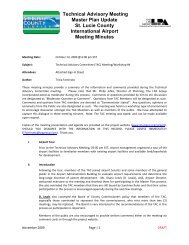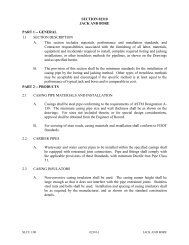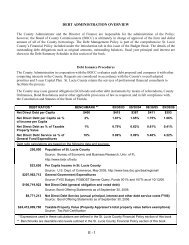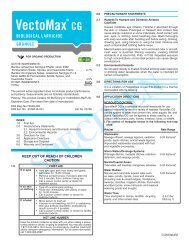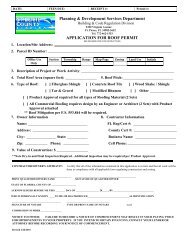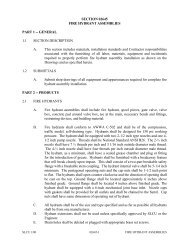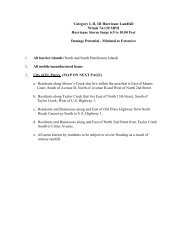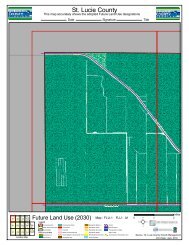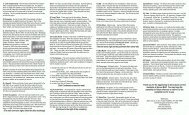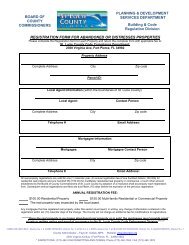Native Habitat Inventory Final Report 2004 - St. Lucie County
Native Habitat Inventory Final Report 2004 - St. Lucie County
Native Habitat Inventory Final Report 2004 - St. Lucie County
Create successful ePaper yourself
Turn your PDF publications into a flip-book with our unique Google optimized e-Paper software.
Developing Field Data Collection Materials<br />
For each site a series of ArcPad GIS data layers was created to be utilized by the field<br />
personnel during the field inventory. The data layers were site boundaries, FLUCCS<br />
polygons, landowner permission, aerial photography, and roads. There was also a custom<br />
built data sheet that was used to collect the field data directly into the computer. These<br />
were loaded onto a field-hardened laptop computer that was GPS capable.<br />
Field Data Collection<br />
Prior to beginning the field verification phase, field biologists reviewed the information<br />
on site characteristics, the field data collection requirements, and the criteria for assessing<br />
natural community quality. In addition, field biologists reviewed the ecological content<br />
for each site using the preliminary GIS maps (e.g., FLUCSS classification, preliminary<br />
FNAI classification, known rare species occurrences, and aerial photography) on the field<br />
computer.<br />
The field personnel used these data layers to locate the site, orient on the site, avoid areas<br />
in which ground access was not permitted, and collect the tabular and spatial data directly<br />
on the laptop. Thus, for each site new data layers were created that showed the<br />
delineation and classification of each of the FNAI natural communities on sites, the GPS<br />
location of any rare and/or exotic species. The tabular data that supports this spatial data<br />
was collected simultaneously and linked to the spatial. Thus the natural community<br />
quality components, key features, management recommendations and the like could be<br />
collected for each polygon as needed.<br />
The field team conducted detailed surveys of the vegetative community types at the 30<br />
sites. The purpose of the field surveys was to classify and qualitatively assess the type<br />
and condition of natural vegetative communities. Vegetative communities were<br />
classified according to FNAI classification (FNAI 1990) and assessed according to 5<br />
ecological criteria (see Table 5)<br />
Site surveys occurred from June to August 2003. Survey time on a given site ranged<br />
from a few hours to several days depending upon the acreage of the site and its<br />
complexity. The rare species lists are comprehensive, but should not be considered<br />
exhaustive due to the single season of sampling and the field time constraints.<br />
Additionally, the information presented should be viewed as a snapshot describing that<br />
natural community at one-point-in-time. Natural communities are dynamic and are<br />
affected by long and short-term climactic changes (i.e., drought), natural processes (e.g.,<br />
fire), and time. As a consequence of natural succession the plants and animals present<br />
within natural community may shift over time.<br />
The following information was collected and for each site.<br />
• Site Rank<br />
• Site Size<br />
• Acres of Edge<br />
44




